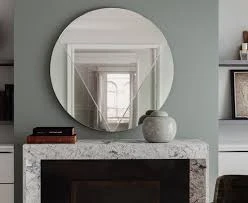

Understanding the Costs of Low-E Glass
Low-emissivity (Low-E) glass has revolutionized the way we think about energy efficiency in buildings. With an increasing emphasis on sustainable construction and retrofitting existing structures, Low-E glass becomes a pivotal element in enhancing thermal performance. While the benefits of Low-E glass are well-documented—reducing energy costs, increasing comfort, and offering UV protection—understanding its cost structure can provide valuable insight for homeowners, builders, and architects.
What is Low-E Glass?
Low-E glass is coated with a thin layer of metallic oxides that reflect heat and ultraviolet light. This technology is designed to improve energy efficiency by allowing sunlight to enter while minimizing heat loss in winter and reducing heat gain in summer. As a result, buildings using Low-E glass tend to require less energy for heating and cooling, translating into lower utility bills.
The Cost Factors of Low-E Glass
1. Material and Coating The primary cost of Low-E glass stems from the specialized coating applied to its surface. This coating can significantly increase the price compared to standard single or double-pane glass. Depending on the manufacturer and the specific properties of the Low-E coating, the price can vary. Generally, Low-E glass can cost anywhere from $2 to $5 per square foot, whereas traditional glass might only range from $1 to $3.
2. Type of Low-E Glass There are several variations of Low-E glass, each designed for different applications. For instance, soft coat Low-E glass provides superior thermal performance but requires an additional layer of protection, leading to higher costs. On the other hand, hard coat Low-E glass is generally more affordable and durable but may not perform as efficiently.
3. Size and Customization Custom-sized Low-E glass panels can significantly increase costs. Standard sizes tend to be more economical, while unique shapes or sizes increase production complexity and cost. Builders often need to balance budget constraints with the desired energy efficiency gains.
4. Installation Costs In addition to the material cost, installation also plays a critical role. Low-E glass requires careful handling; therefore, hiring experienced professionals may add to the project’s overall expenditure. Depending on the complexity of the installation (e.g., window retrofits versus new constructions), installation costs can range from $100 to $300 per window.

5. Long-term Savings While the upfront costs of low-E glass can be higher than traditional glass, it’s essential to consider long-term savings on energy bills. Low-E glass enhances insulation and significantly reduces heating and cooling costs. Energy-efficient homes often command higher resale values, making the initial investment more attractive in the long run.
Benefits that Justify the Cost
The investment in Low-E glass is often justified by the multifaceted benefits it offers. Here are some key advantages
- Energy Efficiency Homes equipped with Low-E glass can expect to save between 20% to 30% on energy bills. This efficiency is particularly beneficial in climates with extreme temperatures.
- Increased Comfort Low-E glass minimizes temperature fluctuations in interior spaces, promoting a more consistent and comfortable environment.
- UV Protection The coating on Low-E glass blocks harmful UV rays that can damage furnishings, carpets, and artwork. By using Low-E glass, homeowners can prolong the life of their interior investments.
- Environmental Impact Opting for Low-E glass supports sustainability goals by reducing the carbon footprint associated with energy consumption.
Conclusion
In summary, while the initial cost of Low-E glass is higher than traditional glazing options, its numerous benefits—including enhanced energy efficiency, comfort, and increased property value—make it a worthwhile investment for many homeowners and builders. By understanding the various factors influencing the cost and weighing them against the long-term advantages, stakeholders can make informed decisions that promote energy efficiency and sustainability in their building projects. As the demand for energy-efficient solutions continues to grow, Low-E glass stands out as a practical choice that aligns with modern environmental goals.